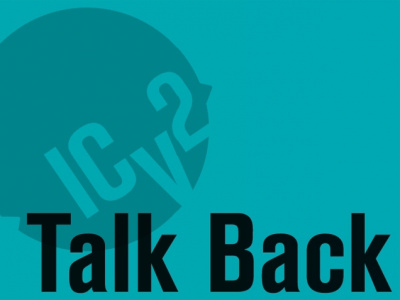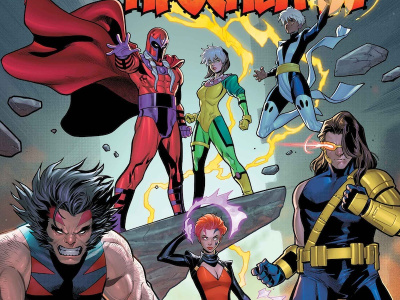 Talk the Talk, Walk the Walk is a weekly column by Kendall Swafford of Up Up Away! in Cincinnati, Ohio. This week, Kendall takes another look at last week's column about IDW and talks about how he's changing what new comic releases he orders.
Talk the Talk, Walk the Walk is a weekly column by Kendall Swafford of Up Up Away! in Cincinnati, Ohio. This week, Kendall takes another look at last week's column about IDW and talks about how he's changing what new comic releases he orders.A friend and colleague of mine, someone I respect a great deal, reached out to me regarding last week’s column on IDW, which caused me to rethink some of the things I said in that column.
I’ve gone on the record many times in the last few months regarding my feelings about digital comics. I truly believe the benefits of digital comics can far outweigh the detriments. A lot of publishers are throwing a lot of things against the wall, hoping something sticks. Digital comics are truly in the “wild west” phase, where anything goes. IDW releasing digital one month after print is really no great sin, in and of itself. It was simply one in a series of unrelated events adding up to what I saw as bad behavior on their part. Pouring gasoline on this particular fire felt good for a minute, but in hindsight, I think I almost singed my eyebrows off!
Digital comics aren’t going away. But rather than cowering in fear of the unknown, we need to find ways to leverage publishers’ efforts to get comics in front of new eyeballs, and we need to figure out ways to monetize those efforts. I think the biggest roadblock currently is the fragmentation that’s already occurring in digital distribution. Marvel, IDW and BOOM! Studios all have chosen separate paths, comiXology (and others) provide several publishers under one roof, but no one source has most (if not all) of the digital offerings available. DC or course, is still taking a wait-and-see approach, preferring to sit this round out. If a reader had to visit one store for Marvel Comics, another for DC, another for IDW, and yet another for other publishers, he wouldn’t stay a reader for long! Clearly there’s little physical effort in buying digital comics from several sources, but any added steps are just another impediment for a potential new reader.
•••And now, for something completely different•••
Do you order comics (or trades, or whatever) knowing (or at least suspecting) you won’t sell them, simply because they’re published by one of the “big 2”? (Or 3 or 5...) I have for far too long. To admit that is painful, and seems idiotic when I read it myself. I think many of us believe somehow that to be a “full-service” store, we have to carry everything that Marvel and DC publish. Do we tell ourselves that we’re “big” enough to sell at least one of anything they might publish? That simply because it exists, that it should be stocked? If you’re not able to sell Ms. Marvel hardcover volumes 1-8, are you still ordering volume 9? Stop it! Right now!!
I know most of us have (or should have) monthly budgets for our stores. But how far do you break those expenditures down? By category at the very least, but what about by publisher? My monthly gross sales of new comics is not constant, but it is predictable within a certain percentage. I think many stores fall victim to reactionary spending; spending based on what’s solicited for in a given month, rather than ordering based on your predicted gross sales in a given category for a given month. We go through Previews predicting we’ll sell 10 of this or 50 of that, based on sales history, similar items or some strange voodoo ritual. But within reason, a customer is going to spend x. Sometimes more, sometimes less, but most of them have a budget.
Let’s take DC’s upcoming war comics revival as an example. This is one of DC’s “five-week” events, scheduled to coincide with a five-Wednesday month. Five one-shots, each at $3.99 price points. Now, I love the idea of seeing a new issue of Our Fighting Forces or Star-Spangled War Stories, being the DC guy that I am. So do I order 5, 15 or 50? Let’s say 15. That’s 75 comics in total, or $299.25 at retail. Where is that $300 coming from? If my customer’s budget is limited, and he’s interested in these war comics, he’s gonna drop something else. Will it be another DC title? Or a Marvel title? Or an Dark Horse title that was on the bubble? Or does he break his budget to add these five comics, budget be damned? The answer is of course, yes. He will do any and/or all of these things. Predicting which is where the profitability lies.
My POS system tells me what my sales of DC (or whatever) comics are every month, history tells me whether the month I’m ordering for is gonna be up (May) or down (February), now all I have to do is live with that number when placing my order. It’s easy to fill in the blanks with what you think you might sell. Then take your budget number for that publisher and pare those numbers down until you meet your budget. Pay attention to the number of titles a publisher offers from month to month. Why is Marvel beating DC in the sales charts? Well, maybe in part because they publish on average 30% more titles! And let’s face it, 30% of Marvel’s output could go away tomorrow and no one would care. Just because Marvel (or whomever) publishes it, doesn’t mean we have to buy it, and that’s a really hard idea to swallow. I have Wildstorm titles I can’t sell a single copy of, so why throw good money after bad? Just to be a “full-service” store? I’ll give any title a try, but if no one wants Gen13, why do I somehow feel obligated to carry it? Just in case someone might want it? That’s a sucker’s game! Want space in my store? Convince me your comics will make me money. I’m happy to give a title a chance to build an audience, but if I’ve proven that audience doesn’t exist for me, I’ll give the title the boot, no matter who publishes it.
If you have the capability, try what I’m suggesting. Pick a publisher or two to start. MOBY (what we use) or hopefully the POS system you have can tell you sales by category and publisher for a given period. This baseline number lets you calculate a monthly ordering budget for that publisher. What are the possible variables, the ‘voodoo’ if you will? This is the tricky part. Neal Adams back on Batman will cause all your Batman fans to add this to their planned purchases, but what will they drop to do so? Batman Confidential? Red Robin? Or Fantastic Four? That’s where your mojo comes in. And I promise, this is not an exact science. But just like allocating dollars per category, fine-tuning those dollars by publisher is an important step in controlling spending, and reducing leftover, un-sellable comics. With our wholesale cost on most $3.99 comic books now $1.80 to $2.20 depending on your individual discount level, the stakes have never been higher!
We sometimes live in fear. Fear that if we don’t have it, the other guy will. And if a customer finds this out, then suddenly we’re the worst store on Earth, and any other store must be the best. Fear that we’ll be shunned if we don’t stock every single item a large publisher might deign to sell us, all the while telling us “All sales final!” and “PLEASE come again.”
I love comic books. And I love that I get to sell comic books for a living. But I’m through pretending I have to love every single one of them.
The opinions expressed in this column are solely those of the writer, and do not necessarily reflect the views of the editorial staff of ICv2.com.







